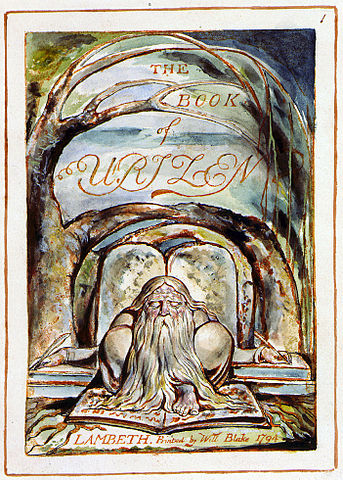
Reading a traditional book without opening it seems like the realm of magicians and scientists, but thanks to scientists at MIT and Georgia Tech, it is now a reality. They have created a device known as a terahertz spectrometer, which uses a type of mild radiation to identify letters on stacks of pages. To be fair, the realm of terahertz spectroscopy has existed for for decades, but MIT and Georgia Tech’s iteration of the device is the first one that can see through layers in a usable way for books.
Though the device is still in its nascent form – it can currently only register writing 20 pages deep – the team working on it has big dreams for its future use. They are working in tandem with the Metropolitan Museum of Art to determine how the terahertz spectrometer can be used to inspect antique books and art pieces that could be damaged by more manual handling. Unlike normal x-rays, the device does not release harmful levels of radiation either.
For anyone who values old and rare books, this device represents an exciting advancement. Preservation of materials can be difficult, and using this tool, archivists could theoretically digitize works without harming them. This could also make rare manuscripts more accessible to lay people because the digitized versions could then be place online.
I hope you’ll forgive my minor foray into the realm of science. The small archivist that lives in my heart was so excited by the potential of this device that I had to share it with you. (The scifi reader in me is pretty excited as well. There are so many possibilities here!)

Image Attribution: William Blake, The Book of Urizen, copy G object 1, c. 1818 (US Library of Congress).
For those of you interested in the image used for this post, The Book of Urizen is one of English writer William Blake’s mythological novels. It is a parody of the Book of Genesis, and it follows the story of Urizen, a primeaval priest who has four sons that play the roles of the elements. It’s a fascinating work, and it has a beautiful title page

That’s amazing!
LikeLiked by 1 person
Isn’t science great? It’s wonderful what people come up with!
LikeLiked by 1 person
This is fascinating. Thank you.
LikeLiked by 1 person
I love sharing things like this! We are developing so much new technology that it is awe-inspiring.
LikeLike
Thanks for sharing this, it’s truly amazing what an be achieved these days.
LikeLiked by 1 person
We humans can do some great things when we put our minds to it!
LikeLiked by 1 person
* what can be achieved (sorry typo)
LikeLike
That is a super book-scanner! 🙂 Amazing! Thanks for sharing. We did not know about it before.
LikeLiked by 1 person
I’m glad you found it interesting. It seems like a very neat tool!
LikeLiked by 1 person
I hadn’t heard about this before. That’s certainly a valuable “tool” for examining old and fragile documents. Thanks for the lesson!
–Michael
LikeLiked by 1 person
I think the team working on it just released another update, so the information is fairly new. It’s exciting to see how these devices develop!
LikeLike
Reblogged this on e. michael helms and commented:
Kristen Twardowski shares some amazing technology!
LikeLiked by 1 person
While the texts are not alive, I can’t help but wonder what kind of impact this could have on the material itself. I mean, it uses radiation to sink through the pages of the book/art/etc. So, what effects is it having on the layers it’s going through? I’m also curious how they managed to access ink using a different form of radiation. *doesn’t like physics and is therefore skeptical*
LikeLiked by 1 person
It’s a good point and a difficult question. Once books are old enough, it seems like every little thing speeds up the disintegration process. Too much heat. Too much cold. Improper humidity. Human hands turning pages. Light bleaching pigment. All of it does terrible things.
From what I understand about terahertz radiation, its frequencies sit between infrared light and microwaves. The device hear simply reads an echo of the radiation frequencies, and differences in those frequencies allow researches to tell where ink is or is not present on the paper. Still, I think you are right that there is always a risk that radiation like this will do more harm than good to books. Luckily they seem to be in a testing stage where they aren’t using ‘real’ books yet, so I don’t have to worry about innocent books being wounded. Stacks of printer paper might be in some danger though. 😉
LikeLiked by 1 person
Yes, I read about it being between microwave and infrared as well, which strikes me as odd considering that scientists have said for years now how prolonged exposure to microwaves can actually be harmful (to an extent). At least they’re still in the testing stage. We don’t want to ruin old documents by being too hasty.
LikeLiked by 1 person
Very true!
LikeLiked by 1 person
I can imagine booksellers installing one to save all those mucky paw marks all over the first few pages of the books on display.
LikeLiked by 1 person
Ha! What a picture. I do wonder how different the bookstores of the future will be. (And am choosing to remain optimistic that there will be many physical bookstores in the future.)
LikeLiked by 1 person
Fascinating!
LikeLiked by 1 person
I’m glad you enjoyed it!
LikeLiked by 1 person
I think I stand with everyone else when I say, amazing!
LikeLiked by 1 person
Science is fascinating, isn’t it?
LikeLike
That’s amazing 😍📚
Science is… Wow!
LikeLiked by 1 person
We really can do incredible things with technology, can’t we?
LikeLiked by 1 person
Amazing things 😍
LikeLiked by 1 person